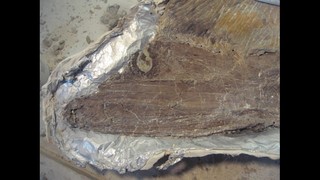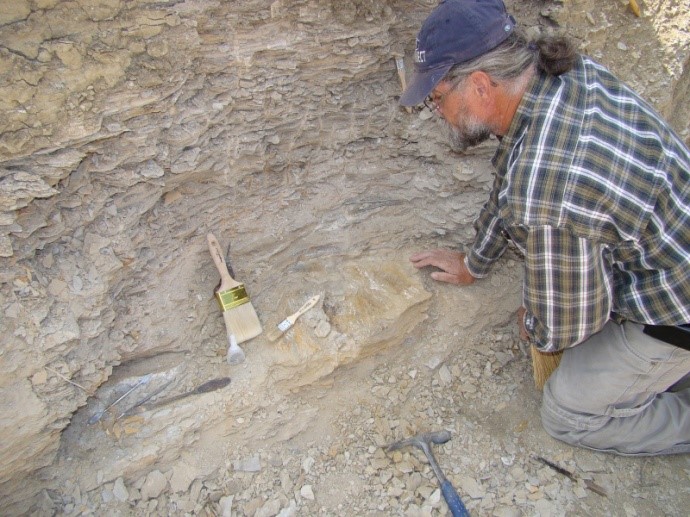KUSA – Something Flattened like a pancake is the remaining evidence of a fish that swam in the sea above Colorado when dinosaurs roamed the Earth
It’s called “The Muppet Fish” and it once called Colorado home 92 million years ago.
On Thursday, paleontologists unveiled a fossil of it discovered in the Comanche Grasslands of Southern Colorado.
“We know that this fish was in the Western Interior Seaway, in the middle of what is now landlocked Colorado,” said Bruce Schumacher, one of the paleontologists with the U.S. Forest Service, who found the fossil.
Schumacher says they discovered it by accident.
“That fortuitous strike of that geologic hammer revealed the fins of this fish,” he said.
It’s a rare find. Only two other fossils of this fish are known to exist in the U.K. and Japan. This is the first one ever found in the Americas and the one found in Colorado is the most complete one ever discovered.
“I call it the Rosetta Stone of these fish because it shows you details that aren’t really evident on the other ones,” said Anthony Maltese, curator of the Rocky Mountain Dinosaur Resource Center.
The fish ate small specimens and krill in a sea that no longer exists, but they were around for a few million years. The Rocky Mountain Dinosaur Resource Center says because fish bones are so delicate, it was huge effort to unearth it intact.
“These fish bones are really thin and really flaky,” said Maltese, who worked more than 150 hours on separating the fish from the rock around it. “Using basically these micro-jackhammers, to remove stuff grain by grain, and using these air abrasion machines that shoot high-pressure baking soda out of them, to clean off the bones.”
The paleontologists say it’s worth the effort, to get a better picture of what life was like in Colorado 92 million years ago.
“It was a fish, unknown in the Western Hemisphere—and it just blows me away,” Schumacher said.
The fossil will eventually be transferred to the repository at the Denver Museum of Nature and Science, so researchers will have access to be able to study it further.

(© 2016 KUSA)


